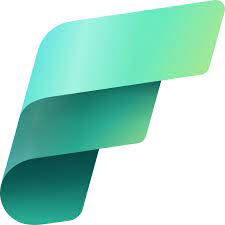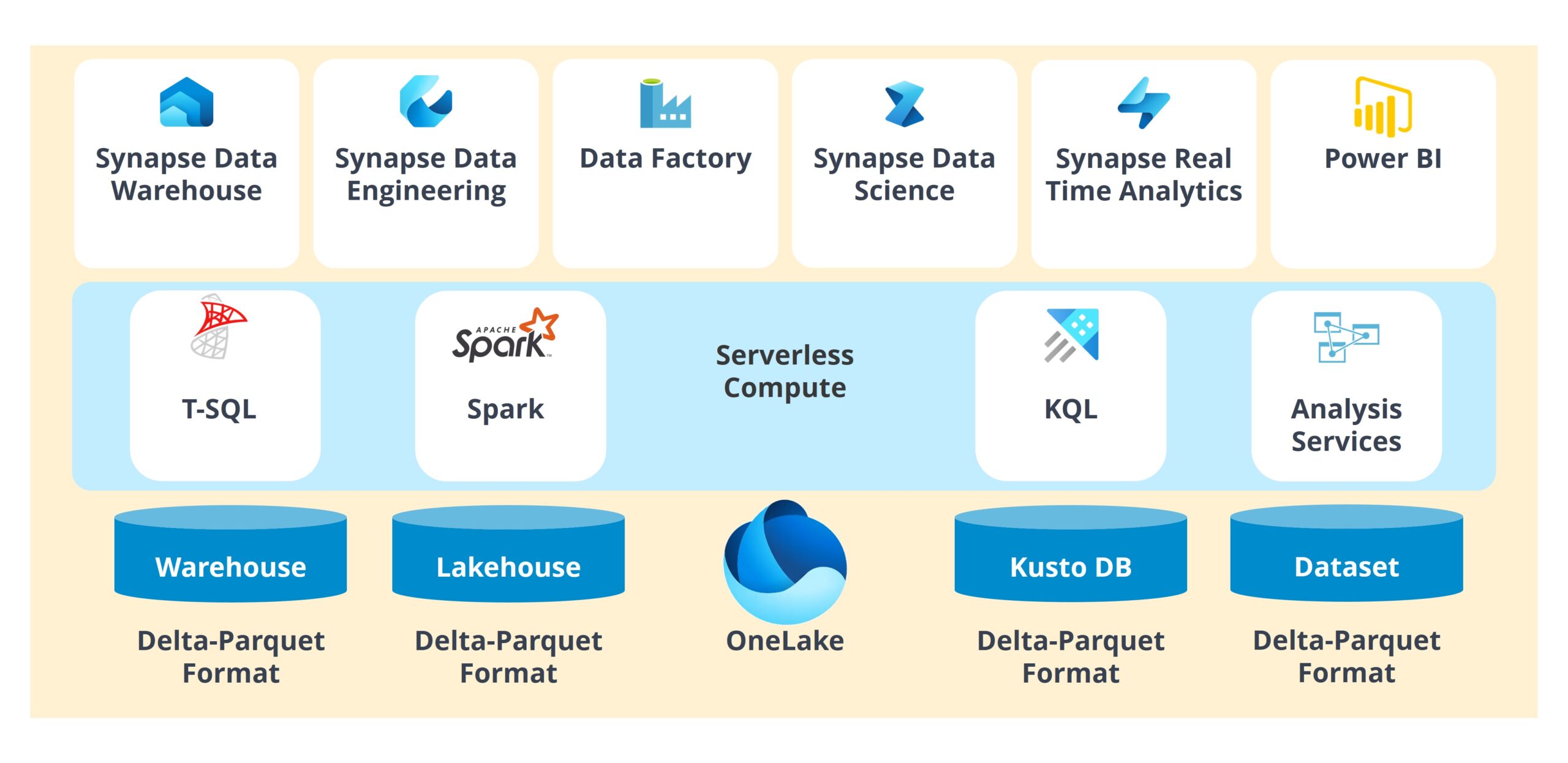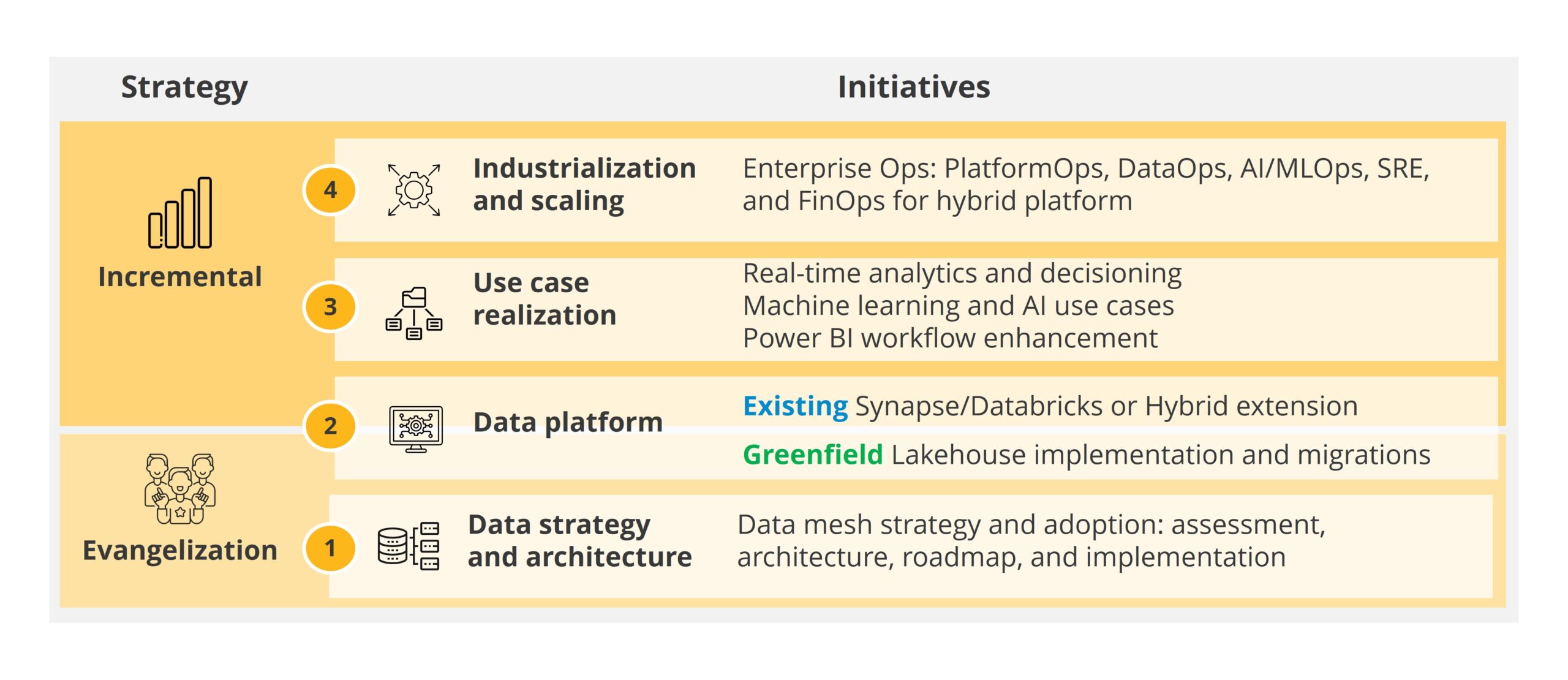Microsoft Fabric
Unified data analytics platform for the era of AI
Introduction
Introduced in spring 2023 and made generally available in November, Fabric is Microsoft’s new cross-cloud data platform offering that unifies data, AI, and analytics. Designed from the ground up with OpenAI and Copilot integrations, it empowers enterprises to leverage the full potential of data, AI, and generative AI for maximizing business benefits.
Fabric’s key benefits are its capabilities for enterprise-level data unification, agility, and flexibility.

Data estate unification under an open and lake-centric hub to connect and curate all data sources be them on Azure, on-premise, or other cloud and data platforms.
Integrated ML/AI model management that reduces time to value by building those on a single, flexible, and robust foundation without the need for data movement.
User empowerment through direct integration into Microsoft familiar apps such as Excel and Teams.

Data governance and protection with Fabric’s built-in security, governance, and compliance capabilities.
Fabric architecture
Fabric offers an integrated platform unifying and synchronizing data from all your sources, both internal data in Azure and external data in Databricks, Snowflake, AWS, and more. Those unified datasets can then be processed, analyzed, and used for ML/AI. It supports full end-to-end data analytics from data to insights to action.

Business benefits of Microsoft Fabric's unified data and ML/AI platform

Increased collaboration
Facilitates domain-centered data-as-a-product and metadata-as-a-product journey for a seamless data and AI enterprise fabric for connected insights.

Accelerated innovation
Democratizes data, AI, and visualization capabilities through no, low, and high code options, accelerating experimentations and data-to-decision journeys.

Cost optimization
Simplifies and optimizes business costs with a pay-as-you-use function without entering data integration processes.

Improved agility
Provides flexibility to adapt to changing business needs, boosting organizations’ competitive advantage.

Data impact measurement
Automates data lineage and governance, allowing businesses to monitor usage, measure outcomes, and ensure compliance through observability and transparent.
Get started today!
Fractal’s multi-step approach to your Fabric implementation
Fractal offers a multi-step approach to implementing Fabric for an enterprise. It empowers businesses by enhancing their data and AI capabilities, fostering seamless integration, and facilitating a more efficient and insightful operational landscape.
If you want to learn more about Fractal’s multi-step approach to implementing Fabric, download the Microsoft Fabric flyer.
Fractal Fabric adoption roadmap

Implementing Fabric with Fractal has the following advantages:
-
Simplify managing multiple setups using Fabric's centralized workspace, reducing overall effort.
-
Increase productivity by gaining more time and flexibility to focus on valuable projects and implementations.
-
Seize the opportunity to enhance data integrity and efficiency by viewing and optimizing the semantic layer.
-
Potentially cut costs with a centralized workspace, ensuring structured data, pipelines, workloads, and reports, leading to improved adaptability.
-
After implementing Fabric and training personnel, further reduce costs by streamlining operations, allowing fewer individuals to manage the environment, and creating more room for organizational product ownership.
